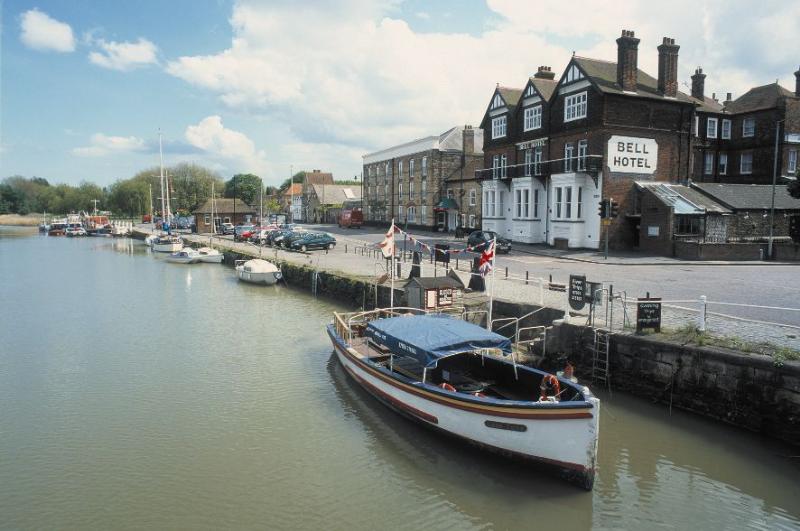
SANDWICH, ENGLAND.
THIS place is twelve miles from Canterbury. Its name is derived from that given to it by the early Saxons. Because, it was situated low in the sands near the sea, it was called Sondwych. It was one of the "Cinque Ports" of the Normans. The word "cinque" in French means five. The five ports were Sandwich, Dover, Hythe, Romney, and Hastings, on the coast of Kent and Sussex. Of the Cinque Ports, Sondwych was the most important, as it was the seaport of London, being only sixty-eight miles distant by road.
Until the time of Henry VII., about the close of the fifteenth century, the crown had no permanent navy; the Cinque Ports furnished nearly all the shipping required for the purposes of the State. In the time of Edward I., near the close of the thirteenth century, the Cinque Ports were required to furnish the State fifty-seven fully equipped ships at their own cost, but the period of gratuitous service of these ships was limited to fifteen days each. These ports on their part were severed from the civil administration of Kent and Sussex into a sort of independency, with its seat of power civil, military, and naval at the Castle of Dover.
Sandwich, on the south side of the Stour, at its entrance into the Pegwell Bay, once had a fine harbor, which has become so filled up with sand that only vessels of small draft can now approach the town. It has an interesting history in connection with the Danish and Norman occupancy, as well as in later times. In 851, Athelstan fought here, at sea, and defeated the invaders; but they returned in greater numbers, and devastated the surrounding country. Down to the time of the Norman conquest, the Danes landed here several times. Even during the reign of Canute, the town was plundered by some of his piratical countrymen.
From the time of the Norman conquest, the town enjoyed peace, and rose in importance. Most of the traffic to and from the Continent passed through the place. Richard I. landed here after his captivity. In 1217, Louis, the Dauphin of France, came with a fleet of seven hundred vessels, and burnt a part of the town. Edward III. made this his port during his war with France; in 1357, Edward, the Black Prince, landed here with his prisoner, John, King of France. In 1435 it was burnt by the French, and again in 1456. It was fifty years before it recovered its former state, but then had ninety-five ships belonging to it. The harbor had become so choked up with sand that it soon lost its importance as a seaport, but it was chosen as a residence by great numbers of refugees from France and Holland, to whom Queen Elizabeth gave a welcome. These established factories and breweries.
The Queen visited the place in 1573, and was entertained at the schoolhouse. The Brewers were enjoined to "brew good beer against her coming." At the entertainment she became "very merrye," and "after eating from divers dishes, caused certain to be reserved, and carried to her lodgings."
The town walls, made of earth, are still standing, but of the five original gates only one remains. In ancient time, felons condemned to death here, were killed by drowning. In 1315 a complaint was made that they could no longer drown them, as there was insufficient water to do it, or to carry their bodies into the sea. The town has a number of times suffered by the plague, and in 1703 it was severely damaged by a great storm.
J. N. LOUGHBOROUGH.